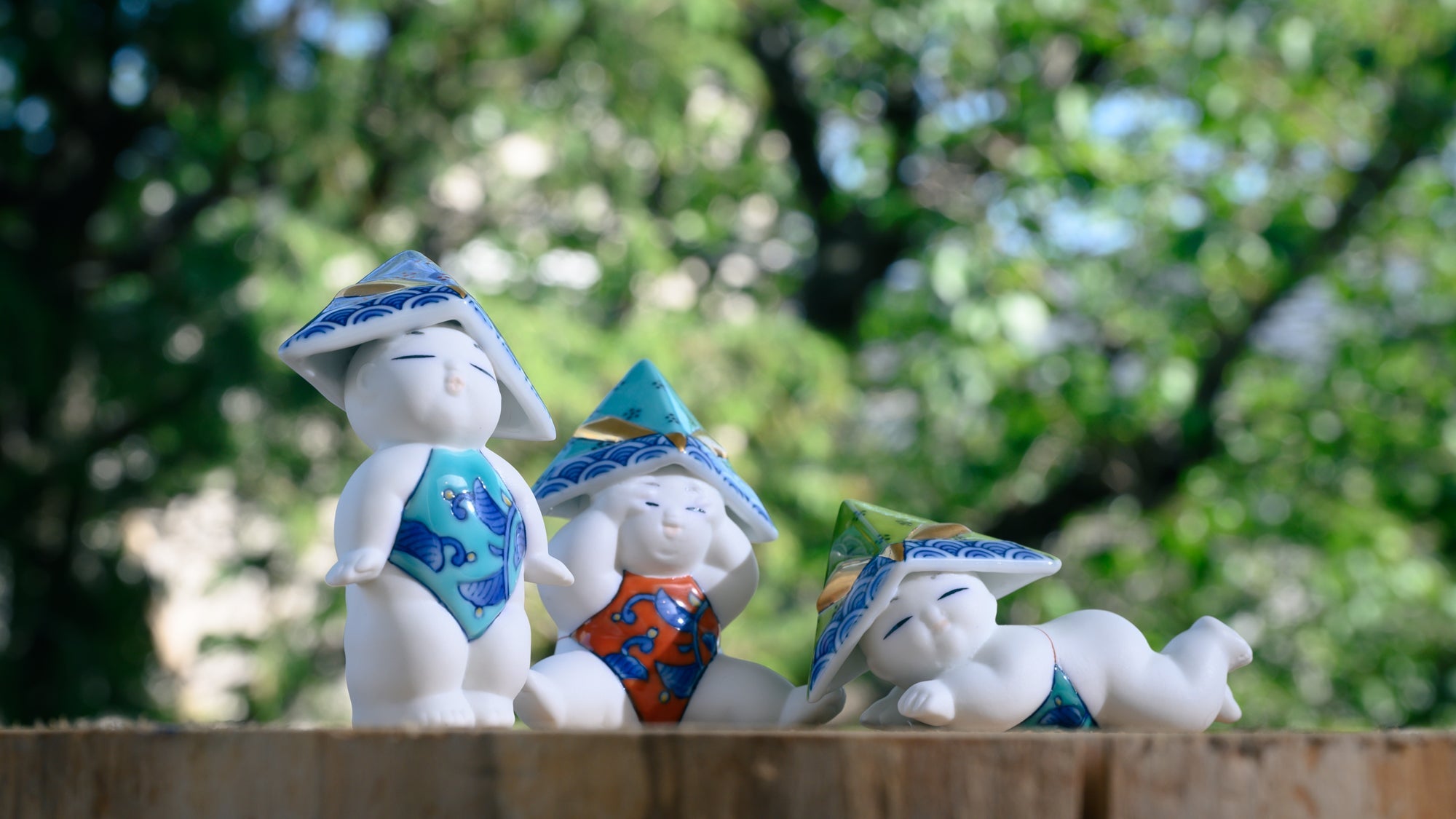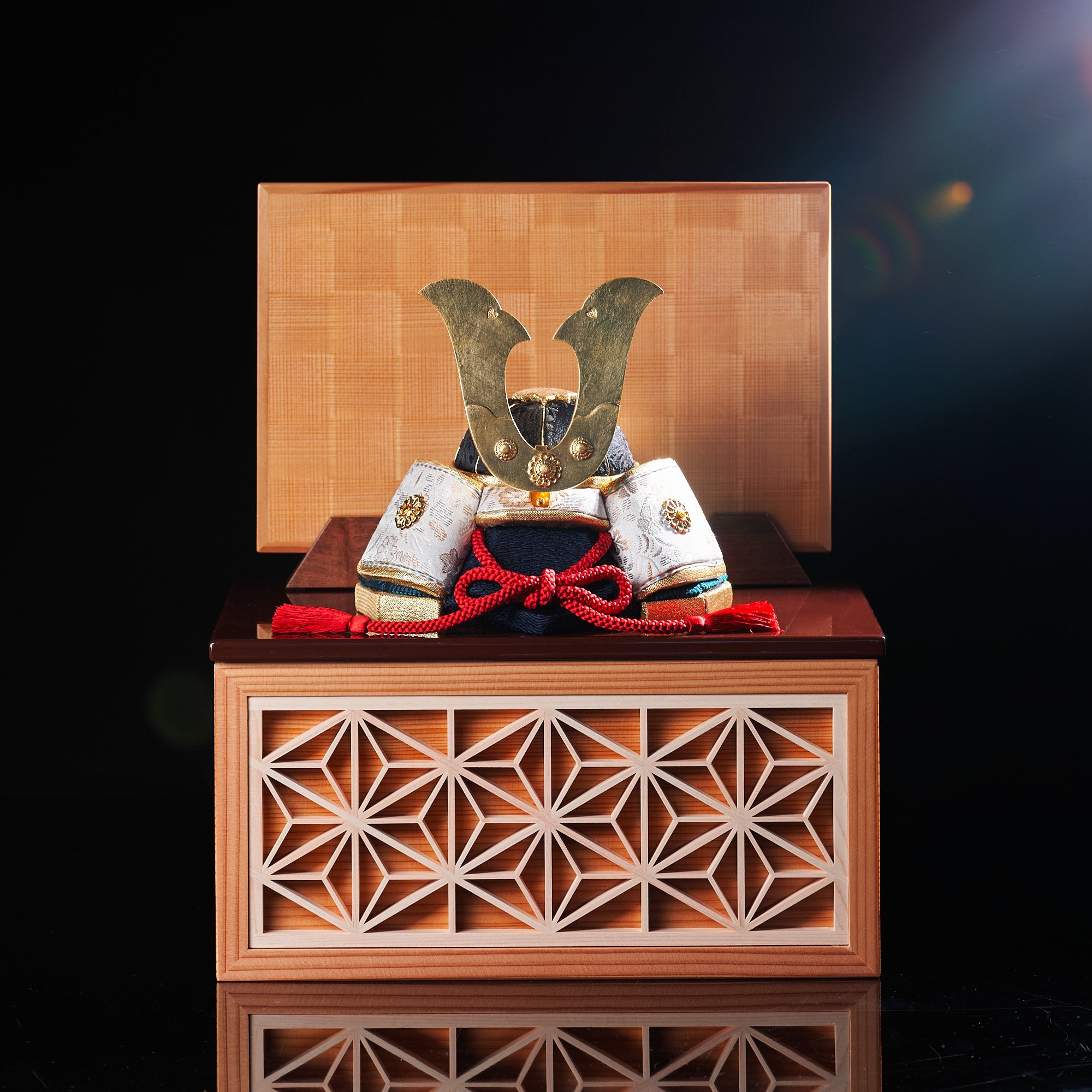
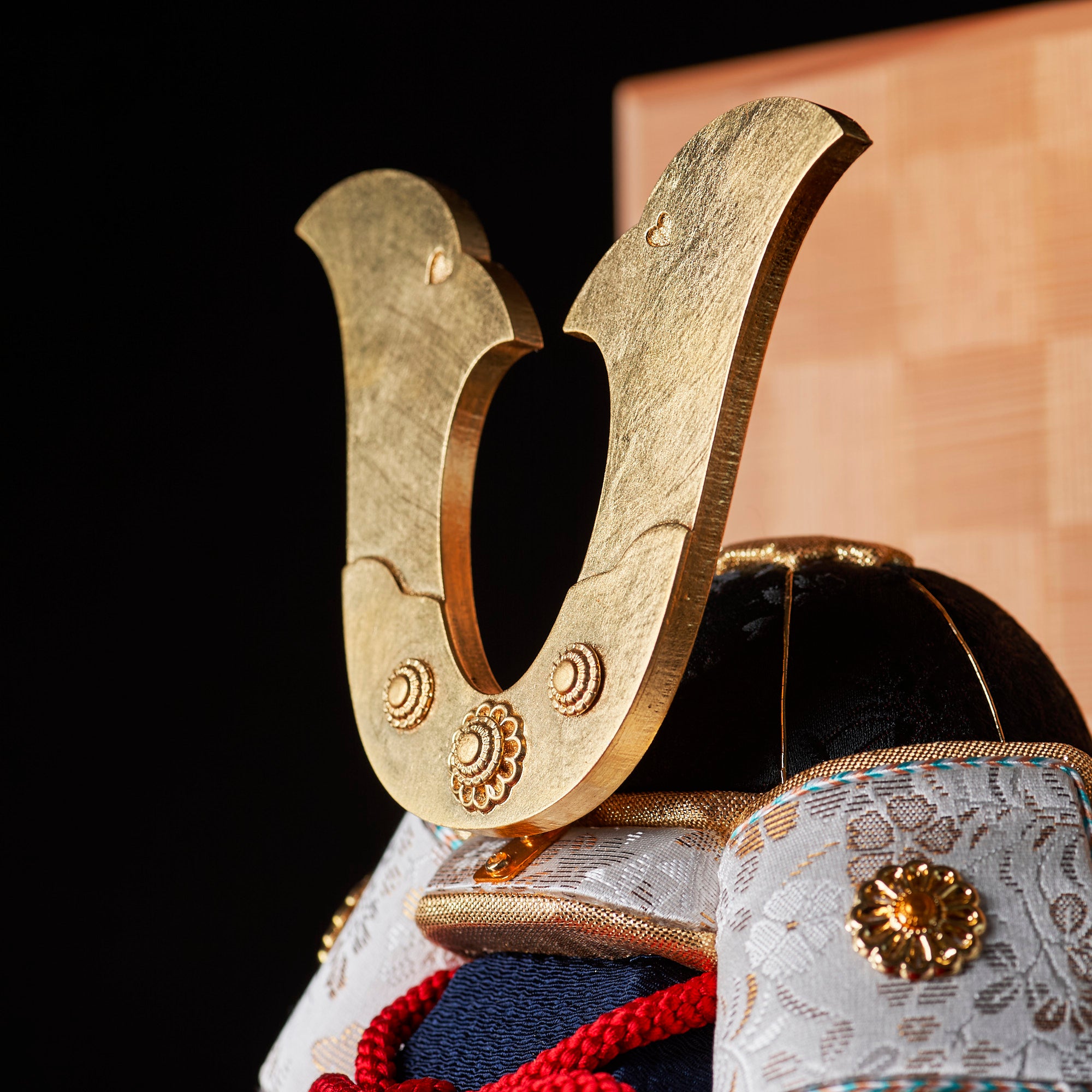
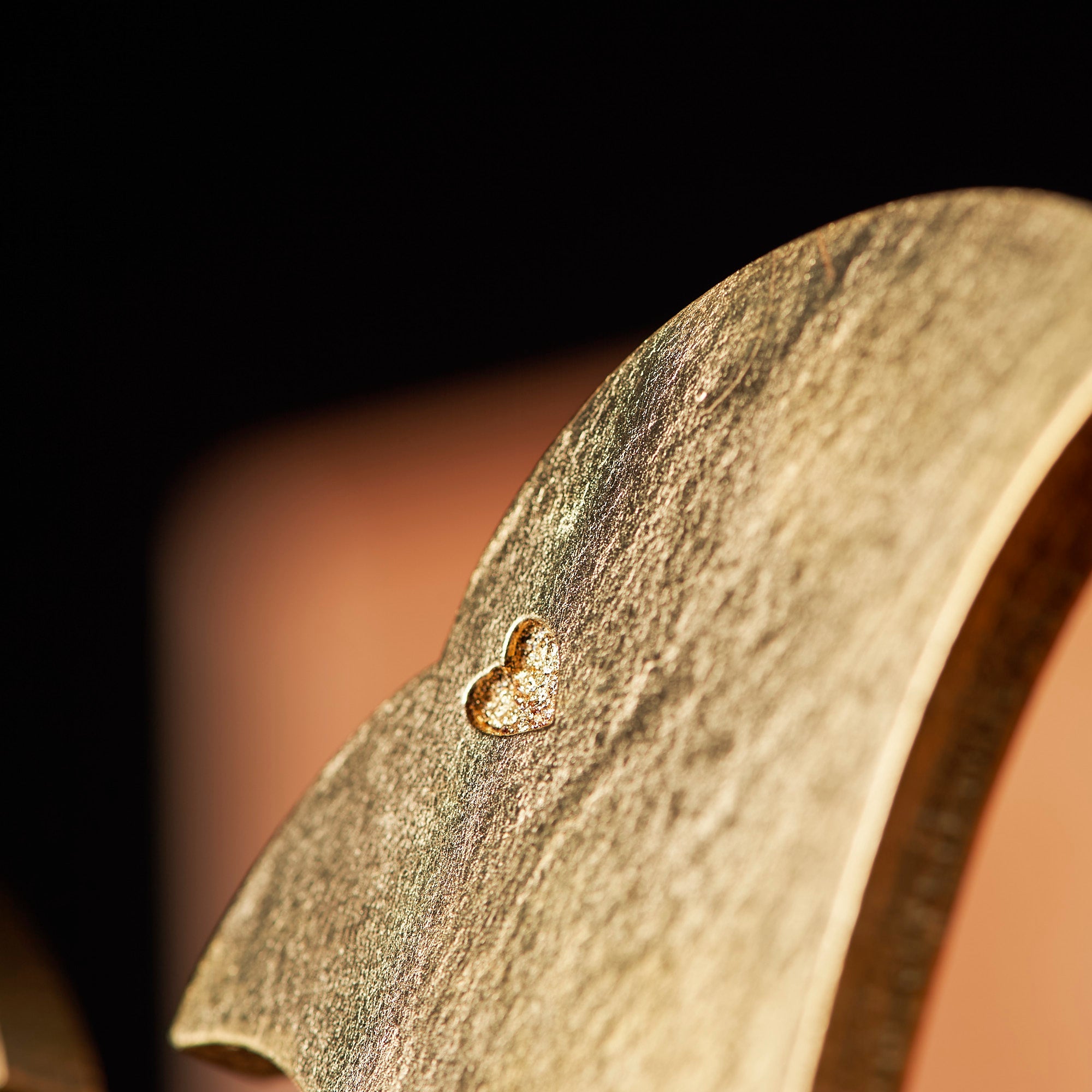
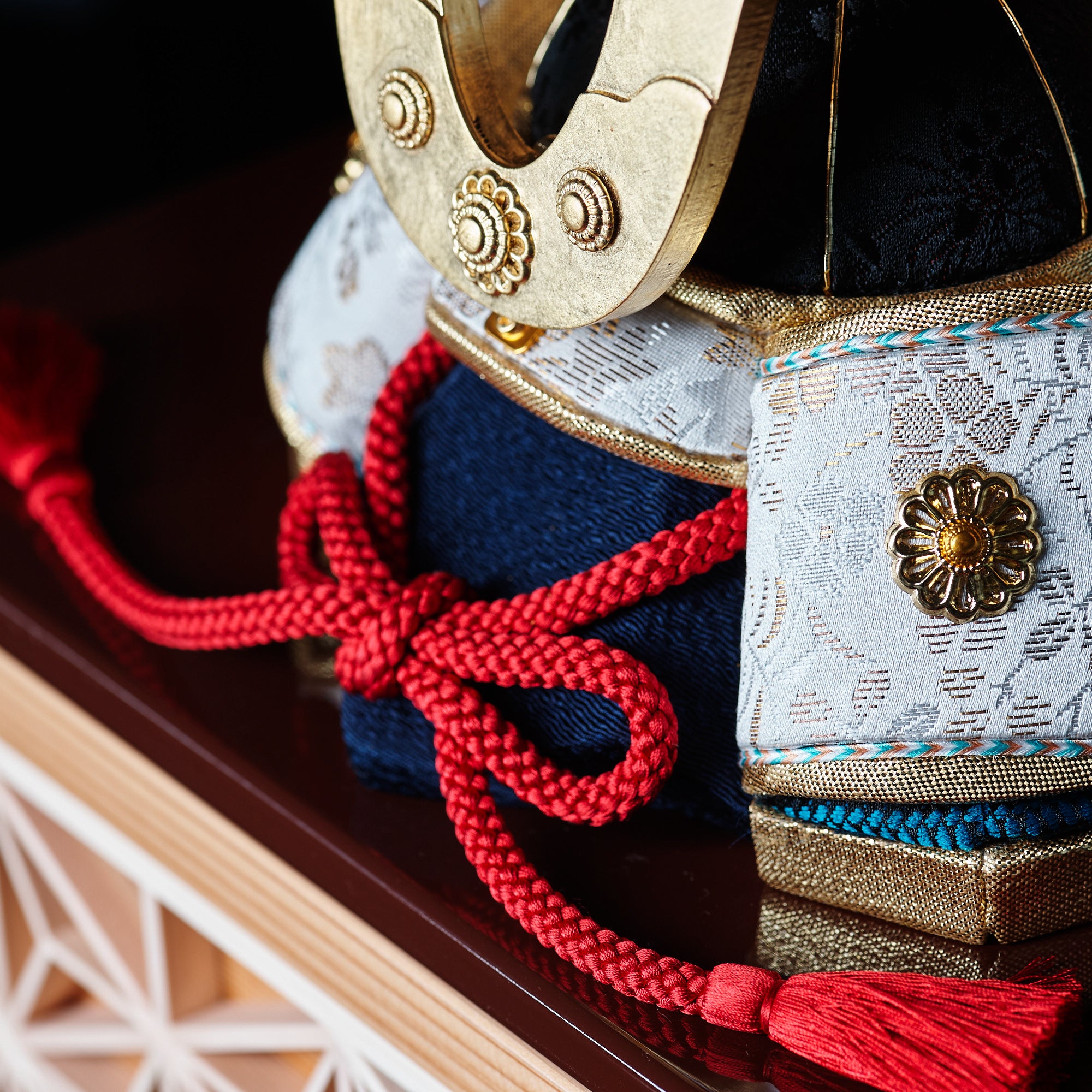
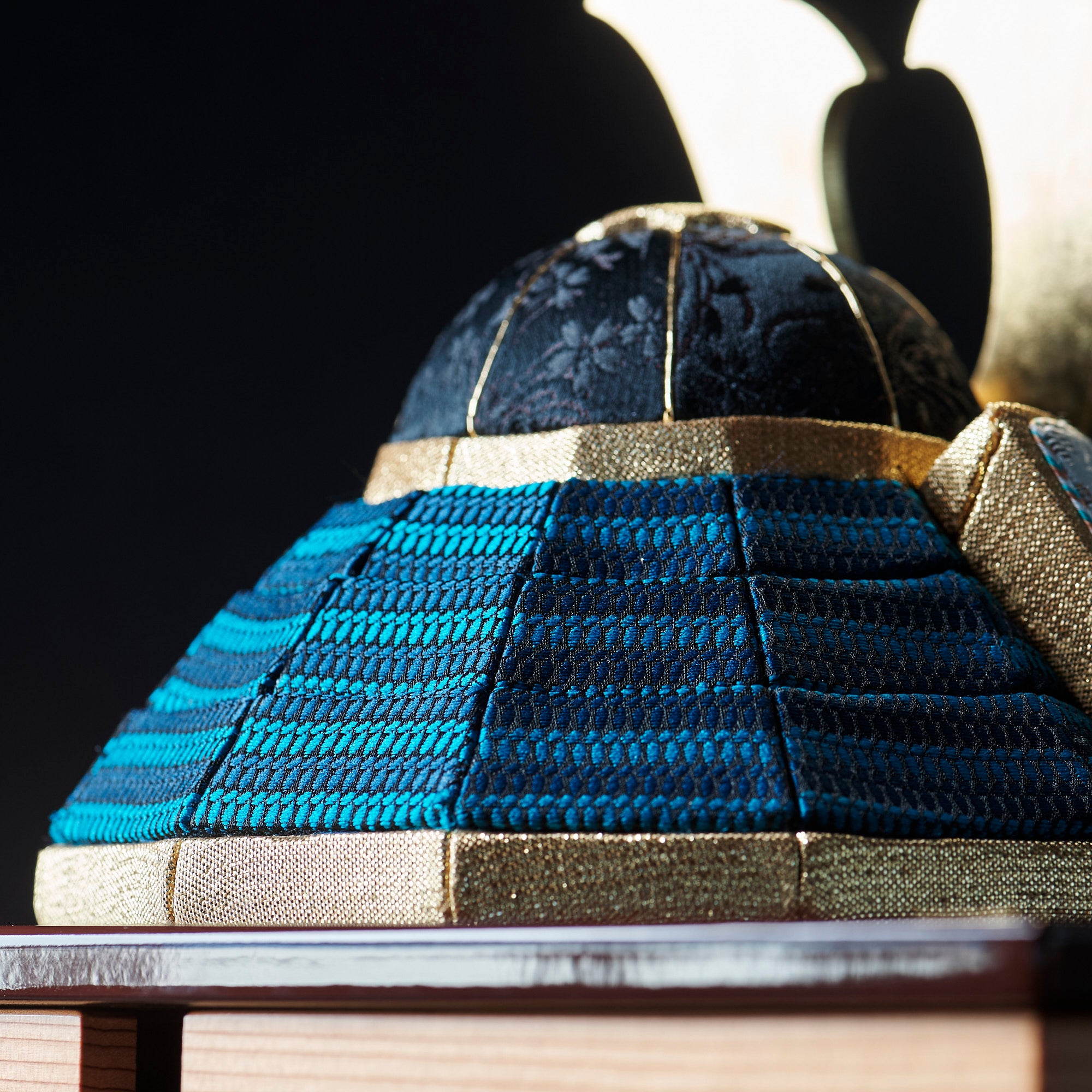

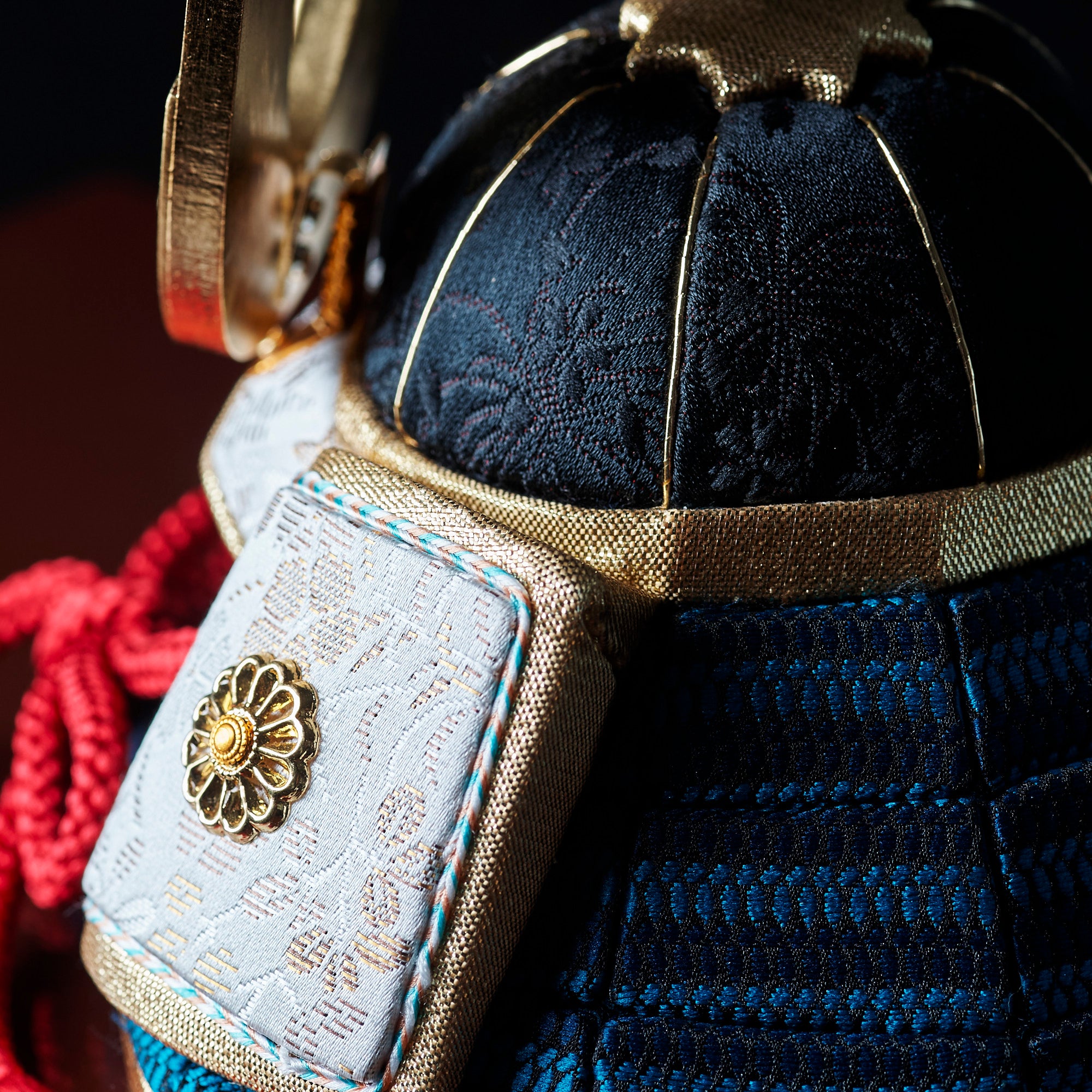
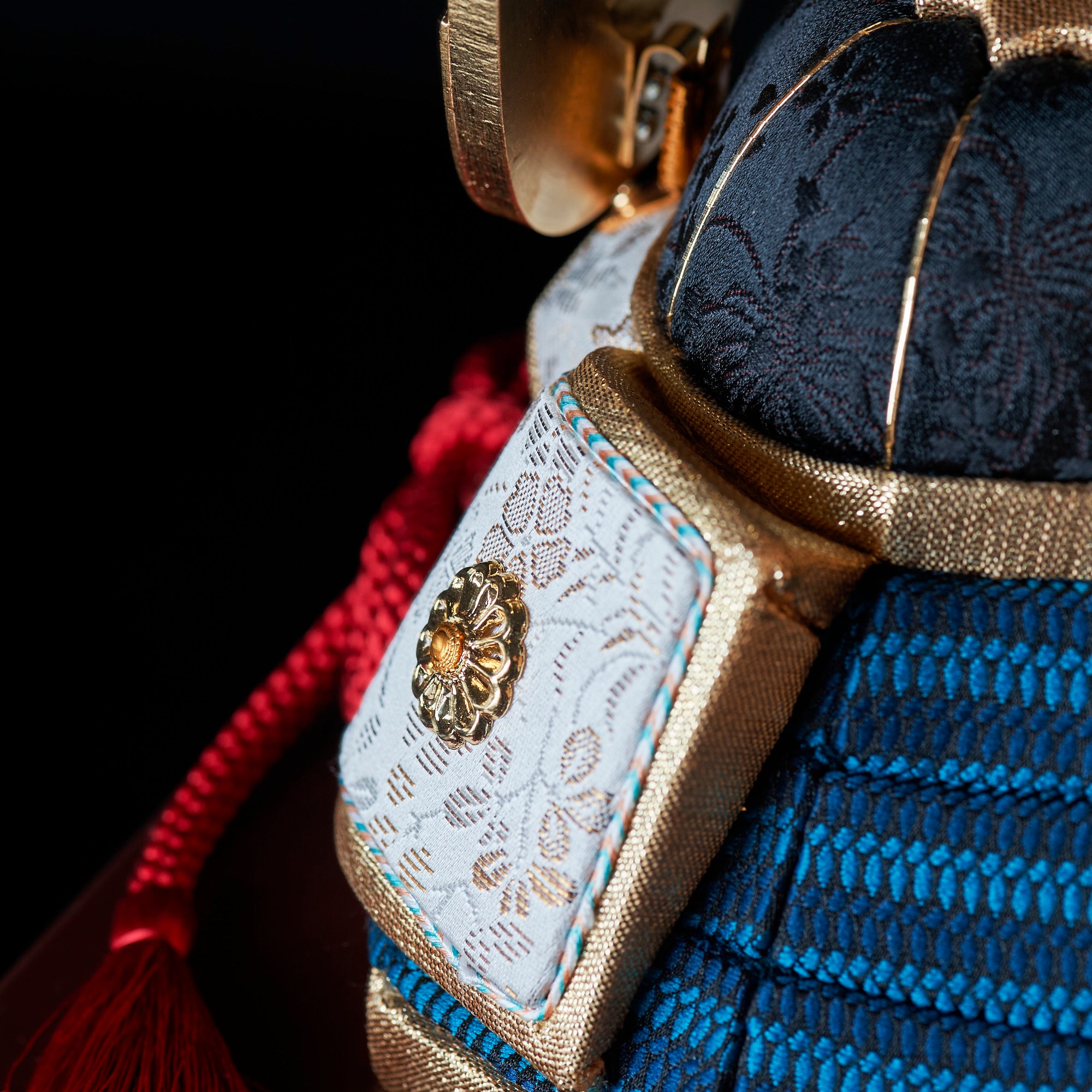

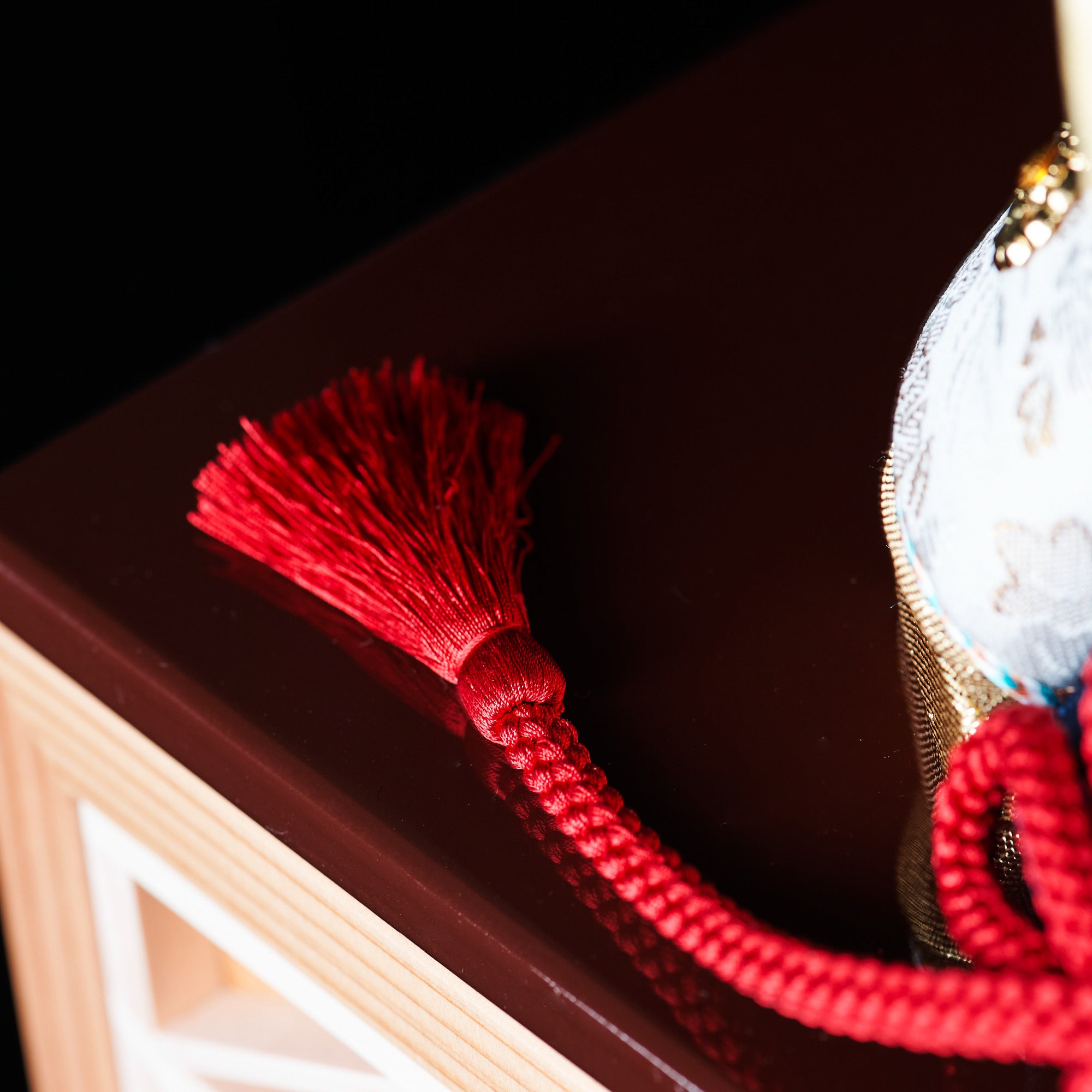
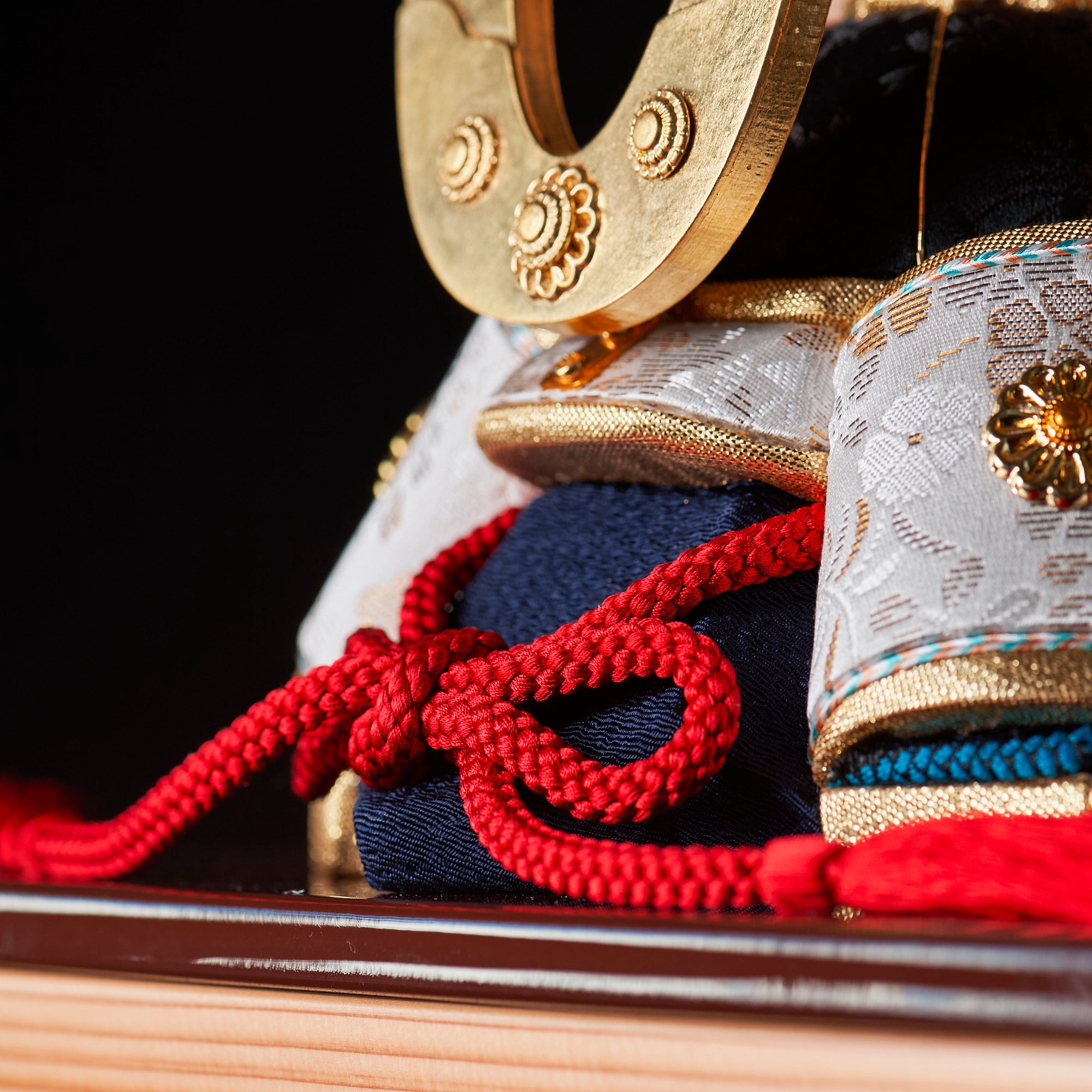
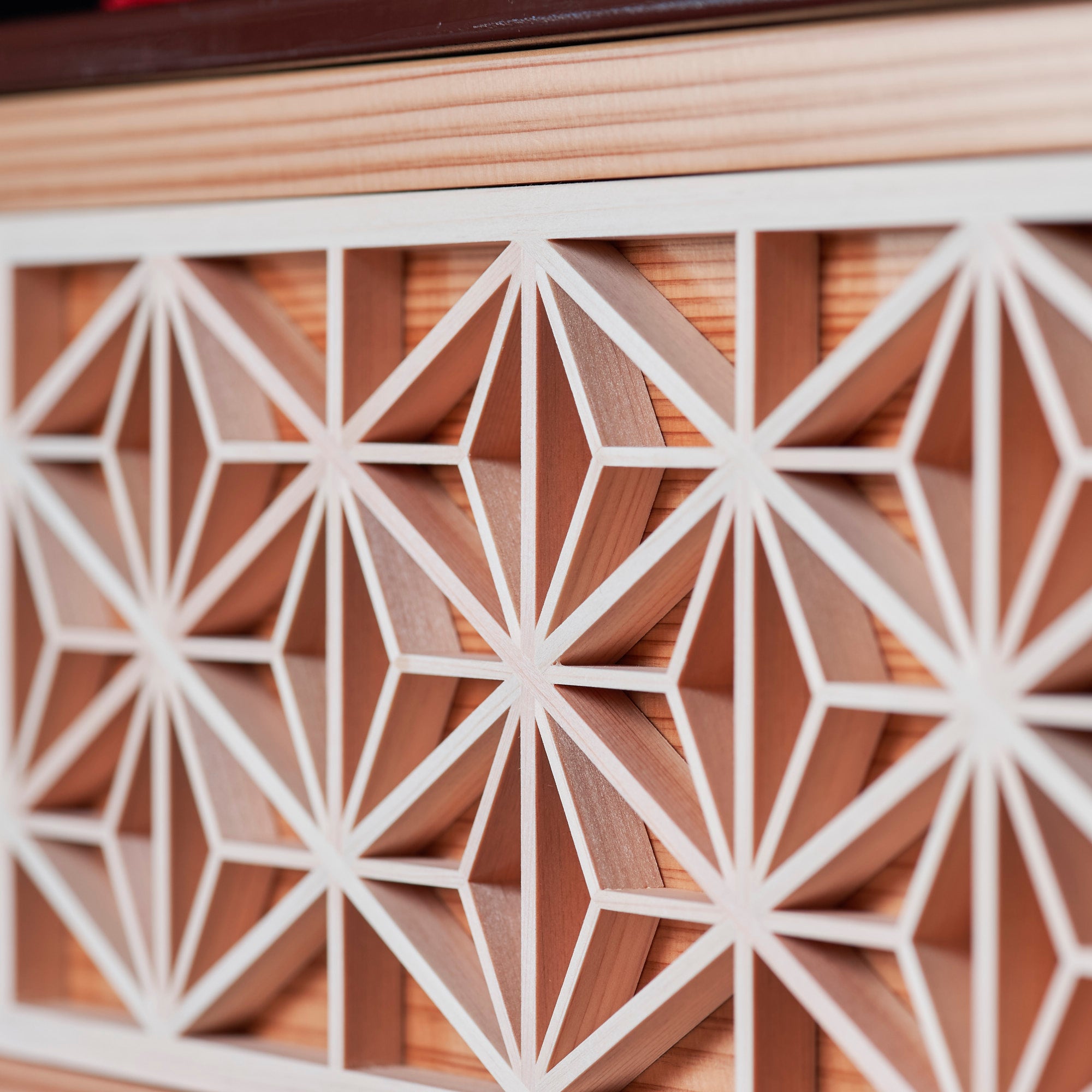
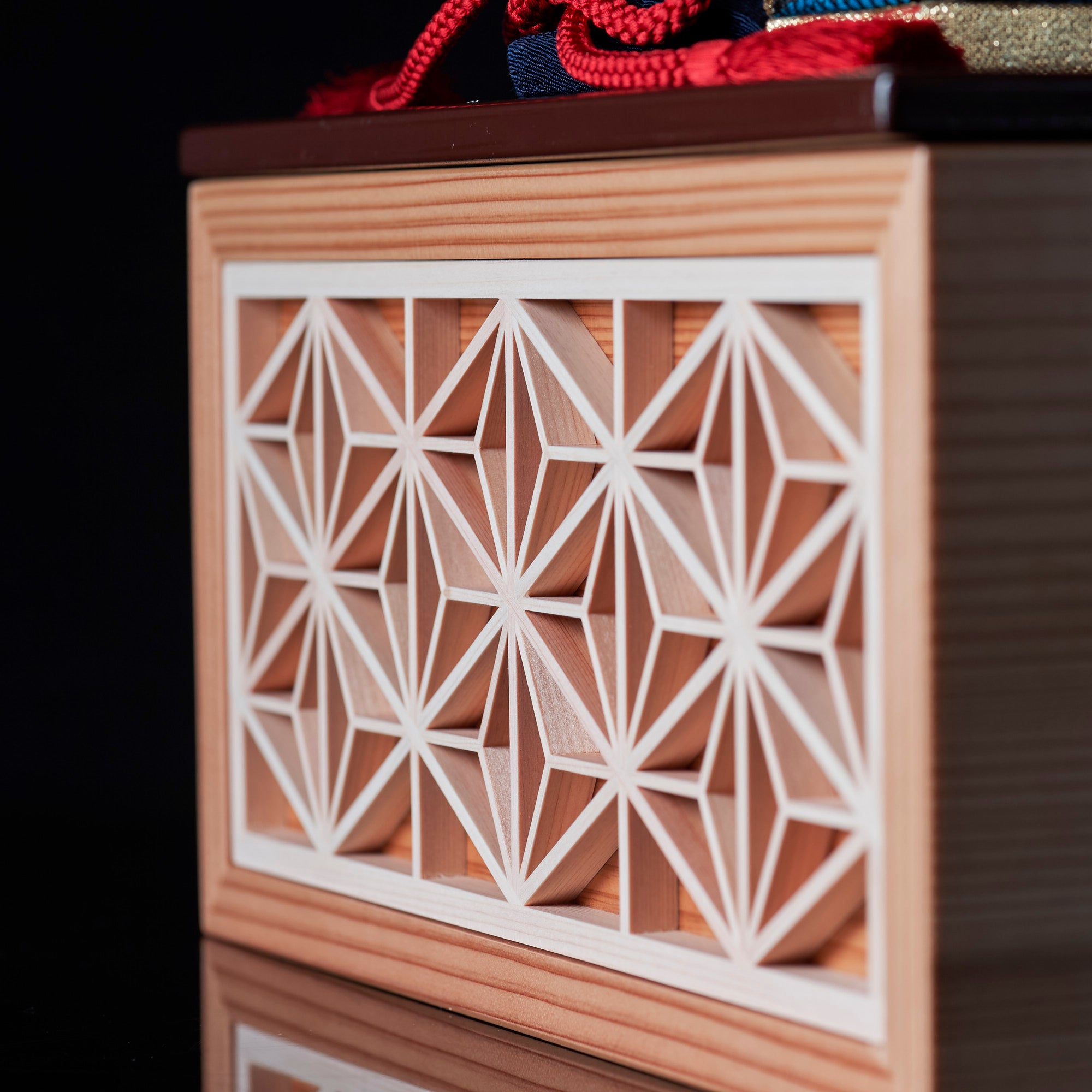
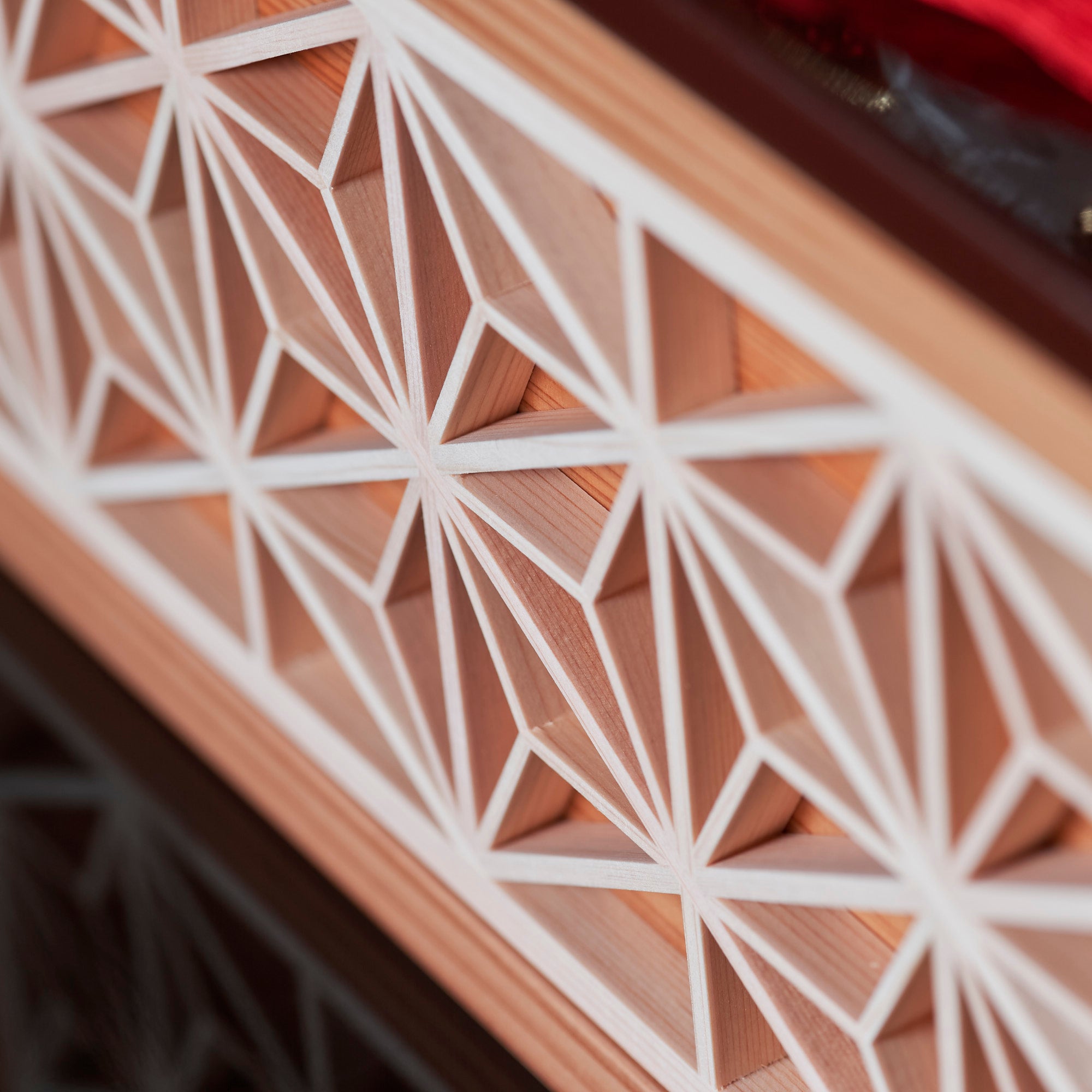
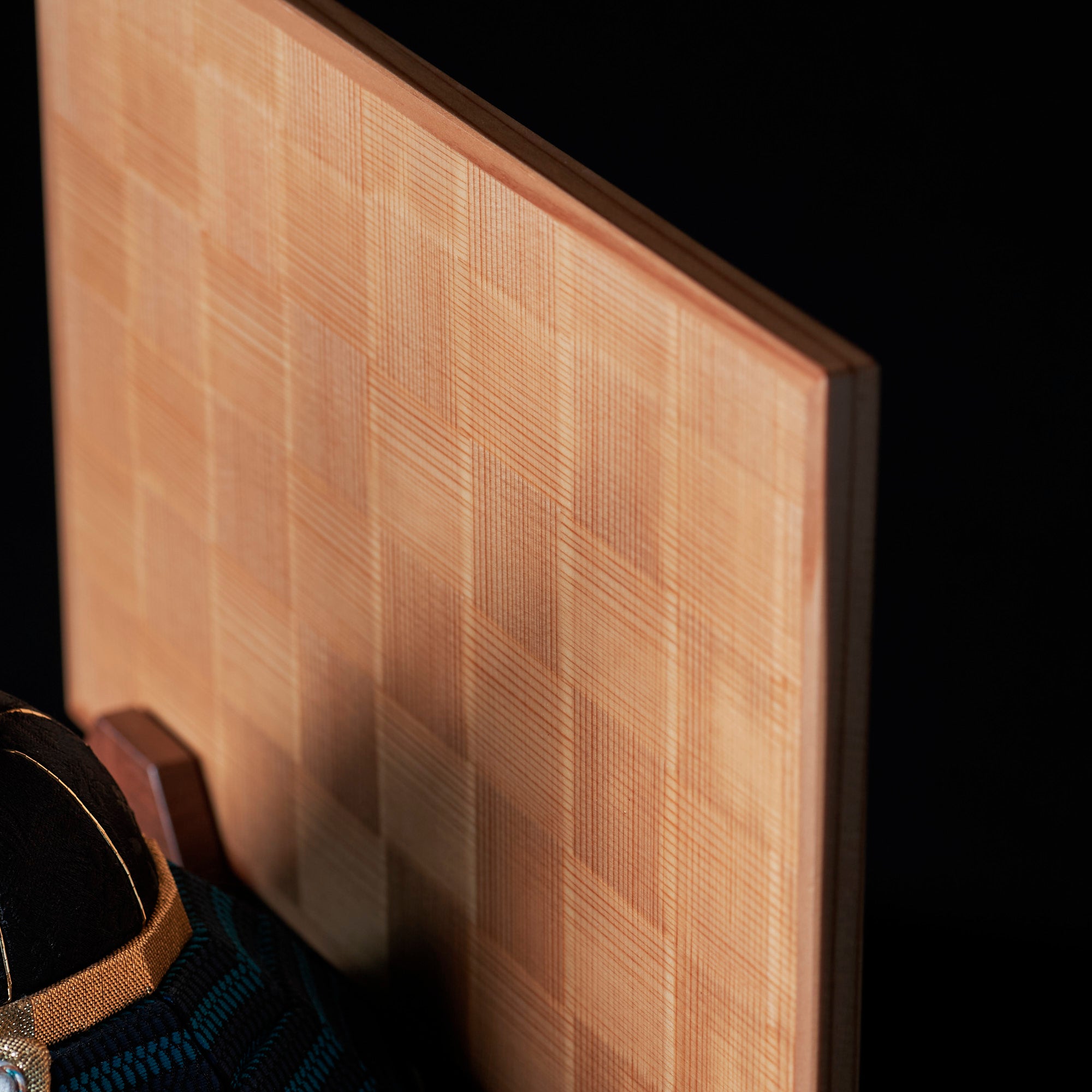

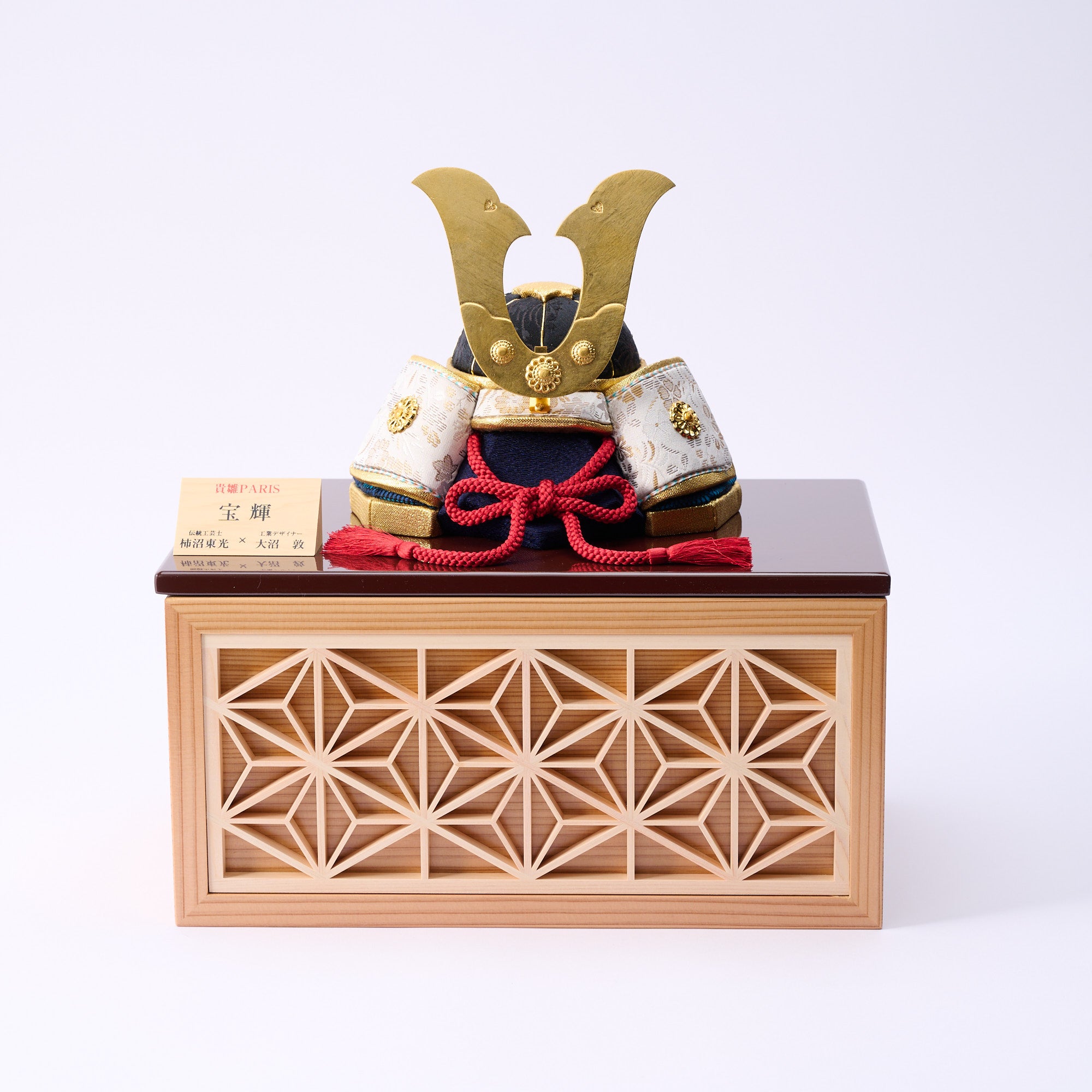

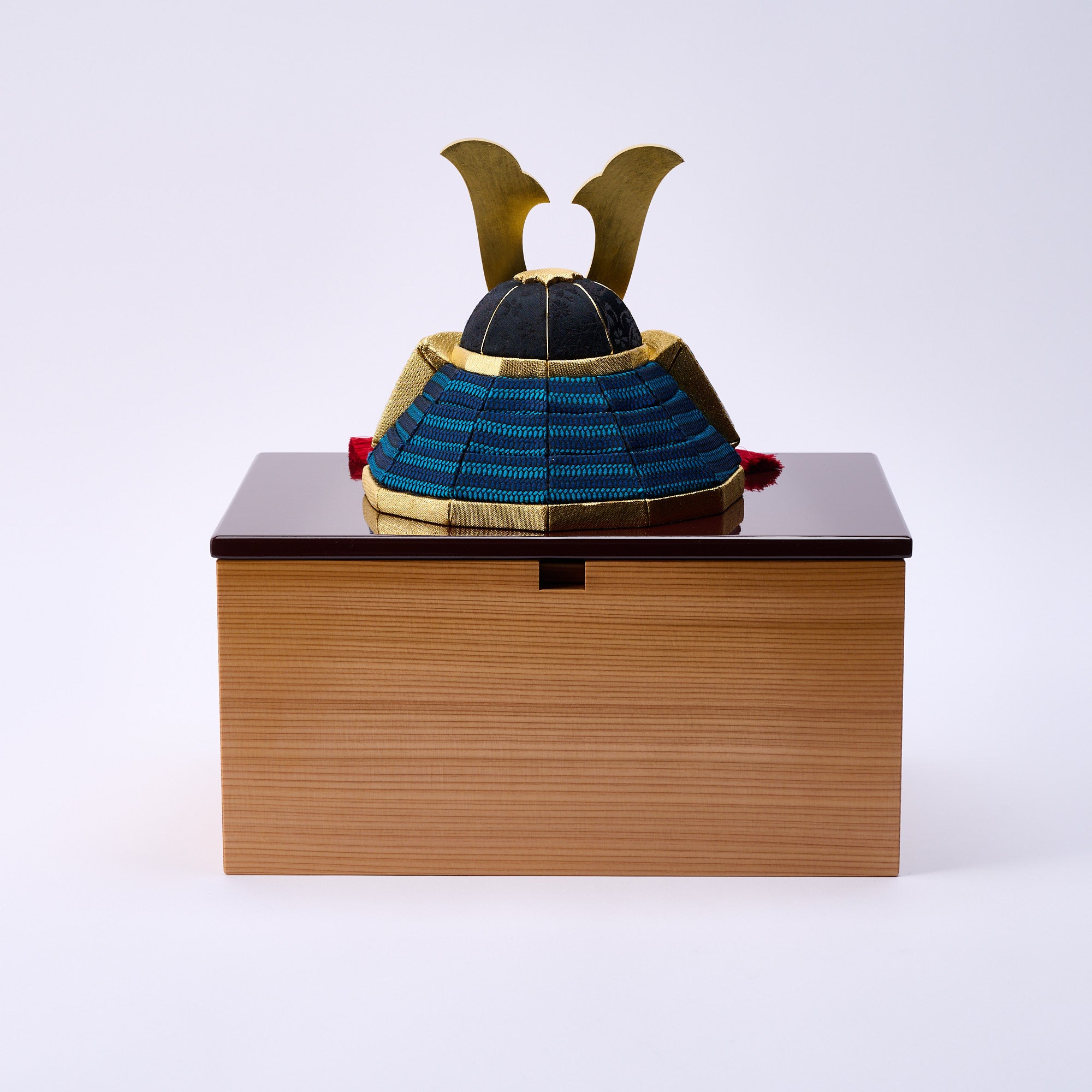
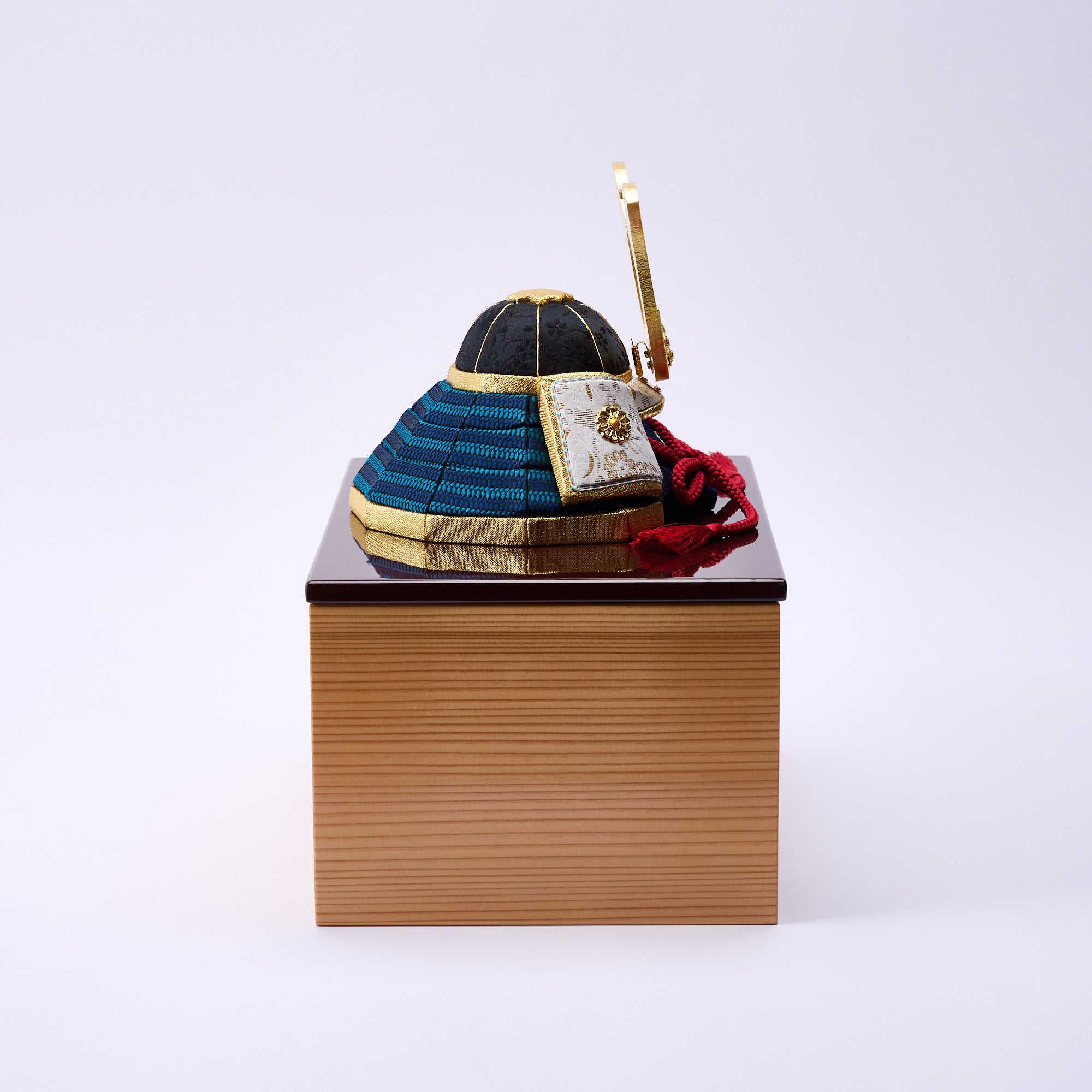
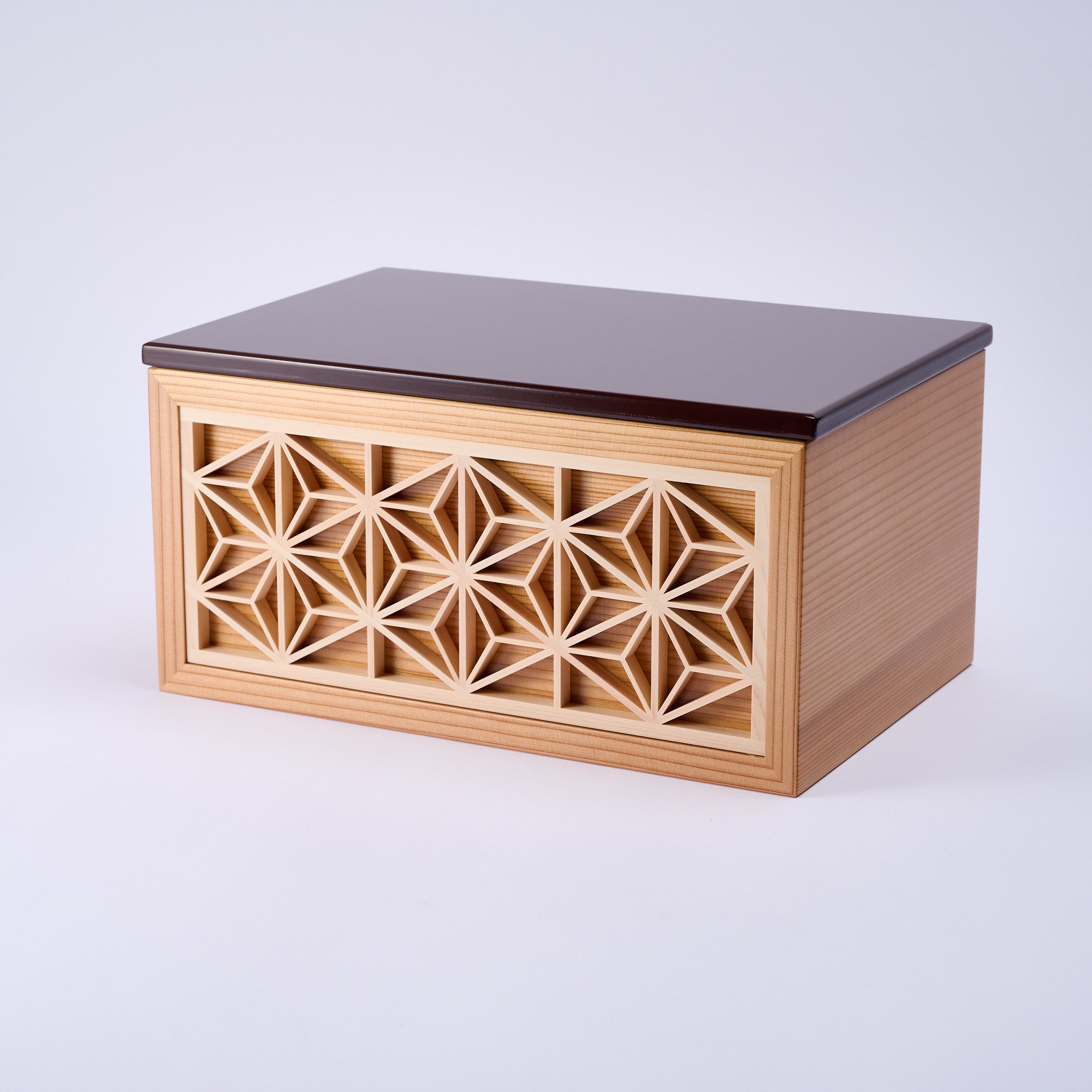
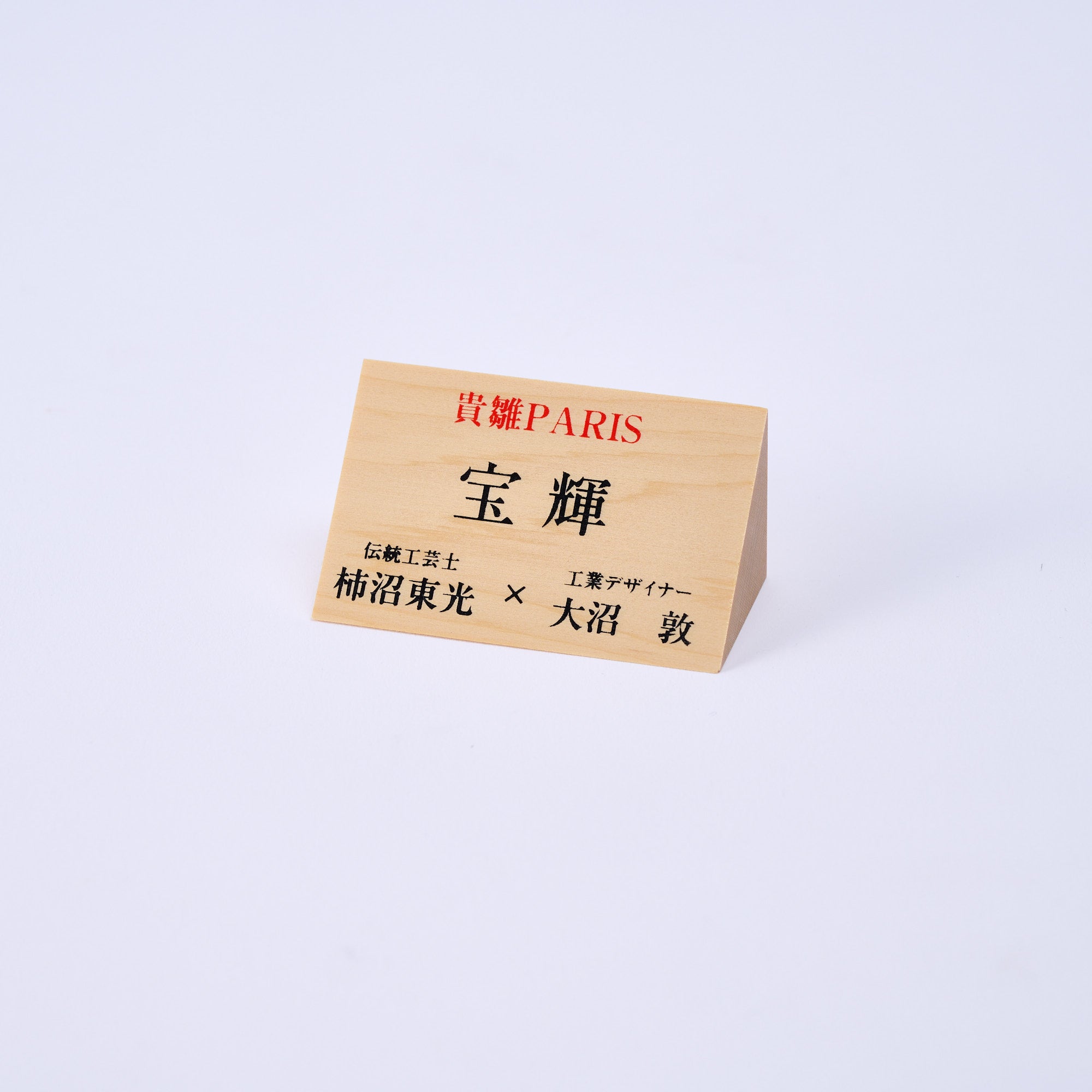
Return to Kabuto Samurai Helmornament
Estimated Shipping Widget will be displayed here!
Dieses Kabuto-Samurai-Helm-Ornament wird von erfahrenen Kunsthandwerkern sorgfältig in Handarbeit nach den traditionellen Kimekomi Technik. Sorgfältig ausgewählte Stoffe werden mit Präzision kombiniert, um sicherzustellen, dass jedes Detail perfekt ist. Der Name „Hoki“ bedeutet auf Japanisch wörtlich „Schatz“ und „Strahlkraft“ und verkörpert eine Aura raffinierter Eleganz und Noblesse.
Samurai-Helme, auch Kabuto genannt, dienten ursprünglich zum Schutz im Kampf und symbolisierten den Schutz des eigenen Lebens. In Japan findet sich diese Symbolik auch im Tango-no-Sekku, dem Tag der Jungen, wieder, der am 5. Mai gefeiert wird. An diesem Tag stellen Familien Kabuto-Ornamente in ihren Häusern auf, um ihren Kindern Sicherheit, Gesundheit und ein gesundes Wachstum zu wünschen.
Dieses Samurai-Helmornament weist durchgehend raffinierte, dezente Muster auf, die ihm eine ausgesprochen traditionelle Ausstrahlung verleihen. Der fukikaeshi, das sich auf beiden Seiten des Helms ausbreitet, wurde entwickelt, um das Gesicht zu schützen, indem es seitliche Schwerthiebe abwehrte. Hier ist es mit Chrysanthemenmotiven verziert, einem Symbol für Adel und Anmut. Inzwischen ist die Maedate, das dekorative Wappen auf der Vorderseite des Kabuto, sollte Individualität und Präsenz auf dem Schlachtfeld zum Ausdruck bringen. Auch dieses ist mit eleganten Chrysanthemen-Motiven verziert.
Ebenso raffiniert präsentiert sich der dekorative Ständer. Die Vorderseite ist mit einem Hanfblattmotiv verziert, das den Wunsch nach Wachstum für Kinder symbolisiert. Der rechteckige Paravent aus Akita-Zeder mit Schachbrettmuster ergänzt den Ständer. Zusammen dienen sie nicht nur als Ausstellungsstück, sondern auch als funktionale Aufbewahrungslösung.
EINZELHEITEN
| Quantity | 1 samurai helmet, 1 decorative stand, 1 screen, 1 wooden name plate |
| Size |
[Samurai helmet] L 17.5 cm (6.9 in) x W 17.5 cm (6.9 in) x H 17 cm (6.7 in) [Decorative stand] L 20.5 cm (8.1 in) x W 30.5 cm (12 in) x H 35 cm (13.8 in) [Screen] L 18 cm (7.1 in) x W 28 cm (11 in) |
| Material |
[Samurai helmet] MDF (Medium Density Fiberboard), fabric [Decorative stand, screen] MDF (Medium Density Fiberboard) |
| Package Type | Paper box |
Hersteller / Marke
Kakinuma Ningyo, gegründet 1950, gilt als Leuchtturm der Exzellenz im Bereich der Edo Kimekomi Puppen, einer herausragenden Form traditioneller japanischer Handwerkskunst. Von klassischen hina Puppen und Boys' Day Puppen bis hin zu fantasievollen modernen Kreationen wie Maneki Neko (Glückskatzen) und DarumaJedes Stück verbindet nahtlos jahrhundertealte Kunstfertigkeit mit einem Hauch zeitgenössischer Eleganz. Mit dem Bekenntnis zur Innovation und gleichzeitiger Wahrung der Tradition schafft Kakinuma Ningyo weiterhin außergewöhnliche Werke, die Vergangenheit und Gegenwart japanischer Handwerkskunst verbinden.
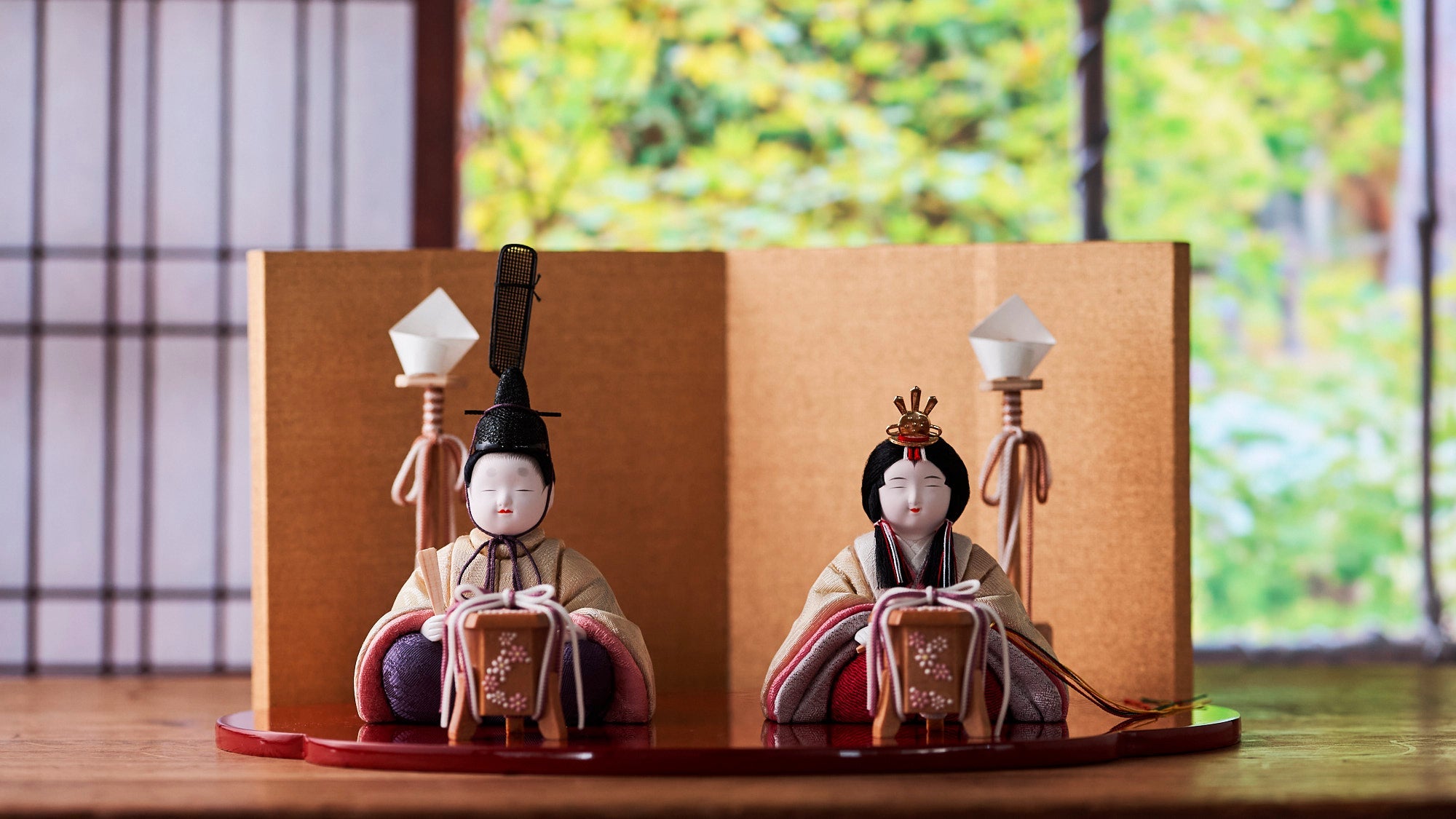
Kunsthandwerk
Edo-Kimekomi-Puppen sind kleine Holzpuppen aus Paulownia-Holz, die mit traditionellen japanischen Seidentextilien bekleidet sind.
Ursprünglich aus Kyoto stammend, wurden Kimekomi-Puppen nach Edo (dem heutigen Tokio) eingeführt, wo sie ihren ganz eigenen Stil entwickelten. Diese äußerst fein gearbeiteten Figuren sind beliebte Souvenirs mit Wurzeln in der japanischen Tradition.
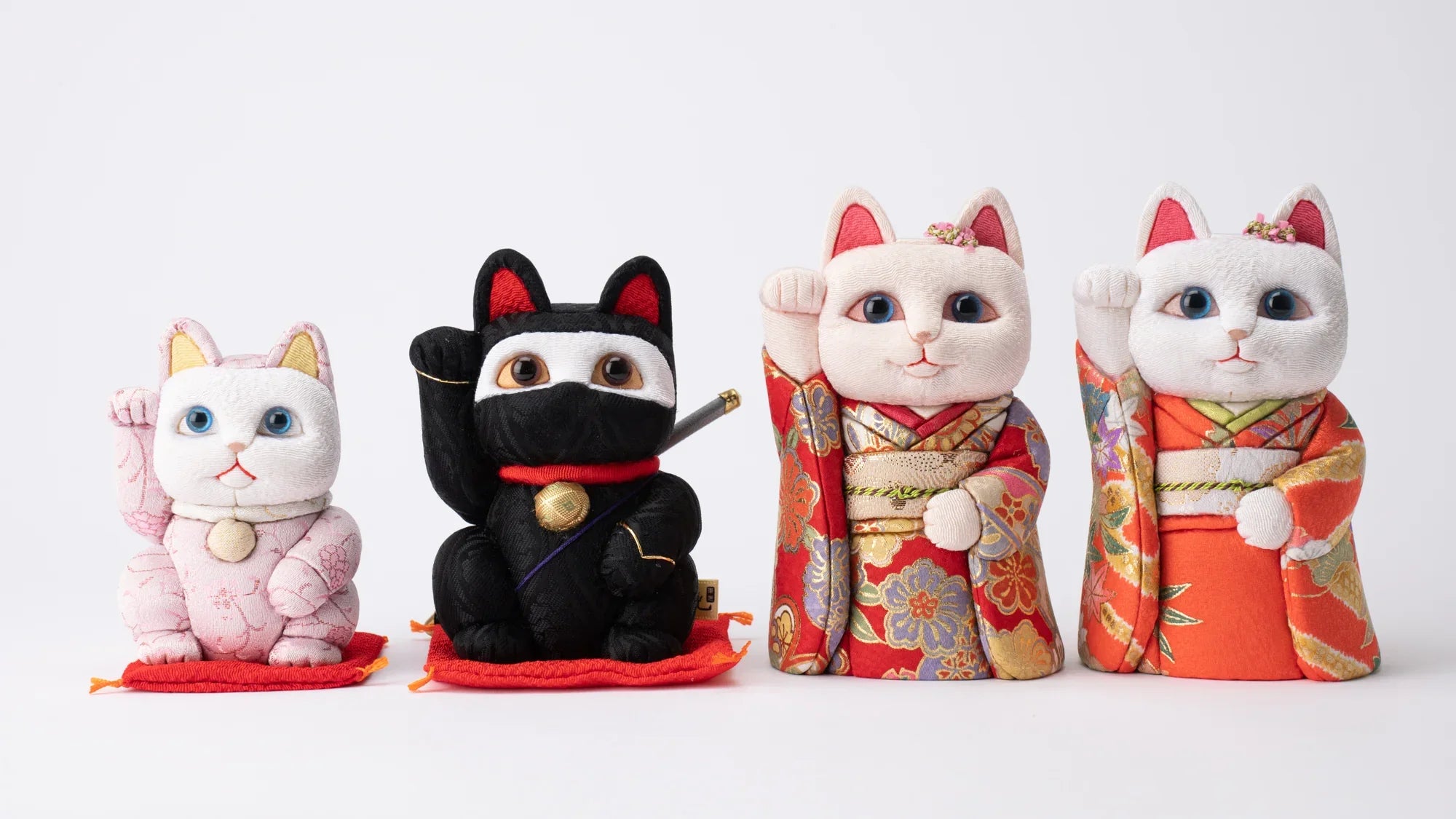
Optionen auswählen






















Estimated Shipping Widget will be displayed here!
Samurai-Helme
Samurai-Helme, bekannt als kabuto, sind traditionelle japanische Kopfbedeckung, die ursprünglich zum Schutz der Krieger im Kampf gefertigt wurde. In Japan kabuto diente nicht nur dem Schutz, sondern symbolisierte auch die Würde und Individualität eines Samurai.
Diese Symbolik lebt weiter in Tango-no-Sekku– auch als Boys‘ Day bekannt, wird heute als Teil des Kindertags am 5. Mai gefeiert –, an dem Familien Kabuto-Ornamente in ihren Häusern aufstellen, um für die Gesundheit, Stärke und Sicherheit ihrer Kinder zu beten.
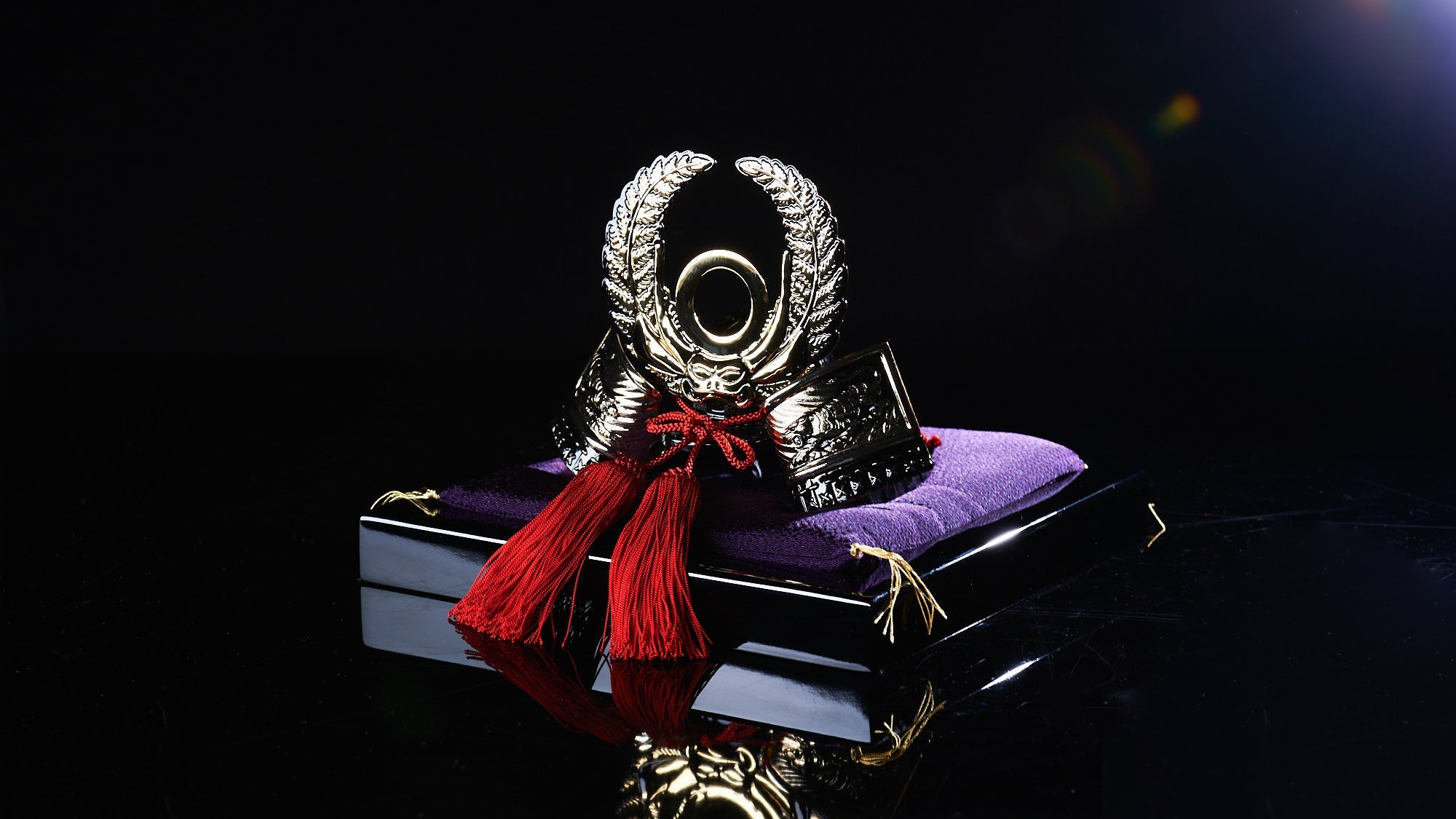
Maifestpuppen
Maifestpuppen sind Puppen, die zum Tango-no-Sekku, auch bekannt als Kindertag oder Jungentag, verwendet werden. Die Tradition entstand in der Nara-Zeit (710 n. Chr.–794 n. Chr.). In der Edo-Zeit (1603 n. Chr.–1868 n. Chr.) wurde der 5. Mai zum Feiertag und als Tango-no-Sekku eingeführt. Während dieser Zeit wurde das Fest unter der einfachen Bevölkerung von Edo weithin gefeiert und man begann, Puppen als Dekoration zu verwenden.
Die Platzierung dieser Puppen symbolisiert die gemeinsame Feier der Geburt eines Jungen in der Familie und verkörpert die Hoffnung, dass das Kind Krankheiten, Unfälle und anderes Unglück vermeiden und stark und gesund aufwachsen möge. Rüstungen und Helme werden als Talismane zum Schutz des Körpers ausgestellt und drücken Wünsche für Sicherheit, Gesundheit und ein kräftiges Wachstum aus.
